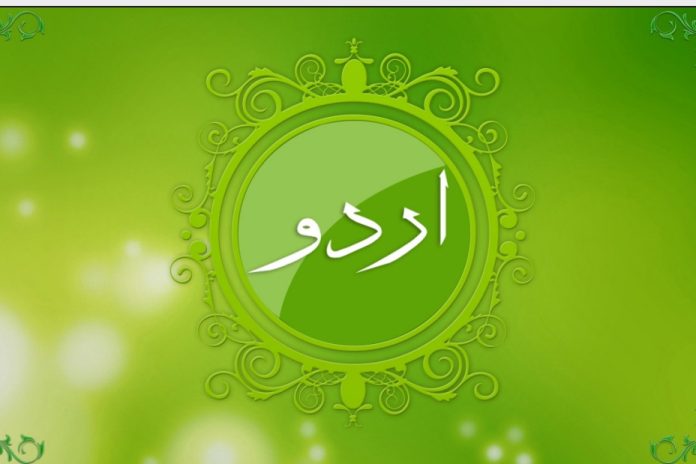A Historical Deconstruction
By: Peerzada Masrat Shah
History, when filtered through selective memory and political expediency, becomes a tool of distortion, often with devastating consequences. One such enduring myth is that Urdu is the “language of Muslims,” a narrative entrenched by political agendas and championed by Muhammad Ali Jinnah, the founder of Pakistan. This claim, however, unravels under scrutiny, revealing a complex linguistic and cultural history that defies such reductive branding. By examining Urdu’s origins, its politicization, and global parallels, we can dismantle this myth and celebrate the linguistic diversity of South Asian Muslims.
The Roots of Urdu: A Language of the Bazaar, Not the Mosque
Urdu was never the organic mother tongue of South Asian Muslims as a monolithic group. It emerged in the 13th century in the vibrant bazaars and barracks of Delhi and Lucknow, a product of interactions among Mughal soldiers, traders, and poets. As historian Shamsur Rahman Faruqi writes, “Urdu was a camp language, a lingua franca born from the fusion of Persian, Arabic, and Indo-Aryan vernaculars like Braj and Awadhi.” Its grammar and syntax were rooted in local dialects, while its Perso-Arabic script gave it a cosmopolitan sheen. Far from being a sacred tongue, Urdu was a practical tool for communication, not a religious emblem.
A striking example of Urdu’s contested status comes from Shah Abdul Qadir, son of scholar Shah Waliullah, who translated the Quran into Urdu in the late 18th century. His pioneering effort was met with fierce resistance. Muftis and qadis issued fatwas, condemning Urdu as a “profane” language unfit for the divine text. Pakistani linguist Tariq Rahman notes, “The ulema viewed Urdu as too steeped in local, non-Arabic culture to carry the sanctity of the Quran.” This backlash underscores a critical truth: Urdu was not inherently “Islamic” or exclusive to Muslims. It was a language of the people, not the pulpit.
Jinnah’s Linguistic Gamble: A Political Construct
So how did Urdu become the so-called “language of Muslims”? The answer lies in the political ambitions of Muhammad Ali Jinnah, a man whose own linguistic profile was far removed from Urdu. A Westernized barrister fluent in English and Gujarati, Jinnah barely spoke Urdu. Yet, in his quest to forge a unified Muslim identity for Pakistan, he seized upon Urdu as a cultural rallying point, ignoring its historical and regional nuances.
In a 1948 speech in Dhaka, Jinnah declared:
> “Urdu, and only Urdu, shall be the state language of Pakistan.”
This pronouncement was not just historically tone-deaf—it was divisive. It alienated millions of Bengali-speaking Muslims in East Pakistan (now Bangladesh), whose identity, literature, and culture were rooted in their mother tongue. As Bangladeshi poet Rafiqul Islam later reflected, “Jinnah’s words were a wound to our soul. Bengali was our breath, our resistance.” The imposition of Urdu sparked the Language Movement of 1952, where students were martyred protesting for Bengali’s recognition. This movement laid the groundwork for East Pakistan’s secession in 1971, a tragedy fueled by linguistic hegemony. As Noam Chomsky observed in a 1972 interview, “The suppression of Bengali was a textbook case of cultural imperialism, fracturing a nation under the pretext of unity.”
Global and National Parallels: Language as Power
The weaponization of language is not unique to Pakistan. Globally, similar dynamics have unfolded. In apartheid South Africa, the imposition of Afrikaans in Black schools ignited the 1976 Soweto Uprising. Nelson Mandela wrote, “To impose a language is to impose a worldview, to erase a people’s essence.” In Sri Lanka, the 1956 “Sinhala Only” policy marginalized Tamil speakers, fueling decades of ethnic strife. Tamil poet Cheran lamented, “When you deny a language, you deny a people’s right to exist.”
In India, linguistic battles mirror these tensions. In 1965, Tamil Nadu erupted in protests against attempts to impose Hindi as the sole national language. Dravidian leader C.N. Annadurai declared, “Hindi is no more to me than English; Tamil is my mother.” These examples reveal a universal truth: language is identity. Forcing one tongue as a marker of faith or nationhood is not unity—it is erasure.
The Myth Persists: A Call for Reclamation
The myth of Urdu as the “language of Muslims” lingers in South Asia and its diaspora. A 2023 X post claimed, “Urdu is the soul of Muslim identity in India and Pakistan.” Yet, this narrative erases the vibrant linguistic diversity of South Asian Muslims, from Punjabi and Sindhi to Malayalam and Kashmiri. As Arundhati Roy said in a 2019 speech, “To reduce a billion people to one language or one faith is to shrink their humanity.”
In Pakistan, voices are challenging this myth. Pashtun poet Abaseen Yousafzai stated in a 2022 interview, “My Pashto is as Muslim as Urdu. Why must we choose?” Sindhi writer Amar Jaleel echoes, “Urdu is beautiful, but it cannot claim all Muslims. Our tongues are many, our faith is one.” Globally, linguist Salikoko Mufwene asserts, “Languages don’t belong to religions; they belong to people.”
Celebrating Diversity, Not Division
Debunking the myth of Urdu as the “language of Muslims” does not diminish its literary richness. Urdu’s poetry, from Ghalib to Faiz, is a treasure of human expression. But its elevation as a singular “Muslim” language was a political invention, not a historical or religious truth. Honoring the linguistic diversity of South Asian Muslims—be it Bengali, Pashto, or Balochi—is an act of historical justice. As Rabindranath Tagore wrote, “The world is not one color, one tongue, one faith. Its beauty lies in its differences.” Let us embrace that beauty, not erase it.
(In arrangement with Straight Talk Communications. www.straight-talk-communications.com)


